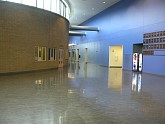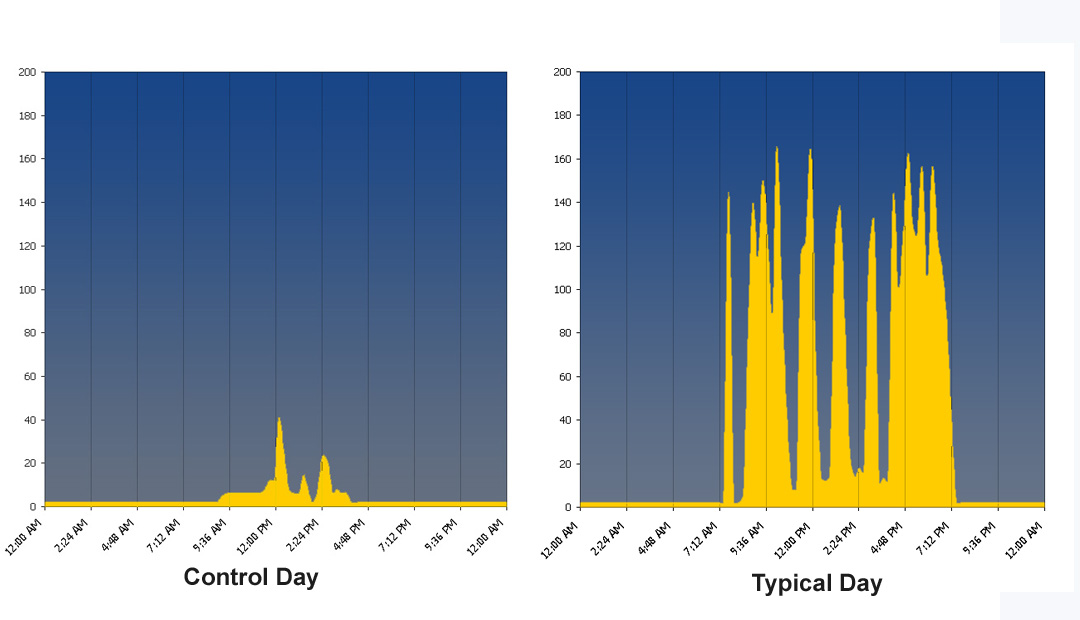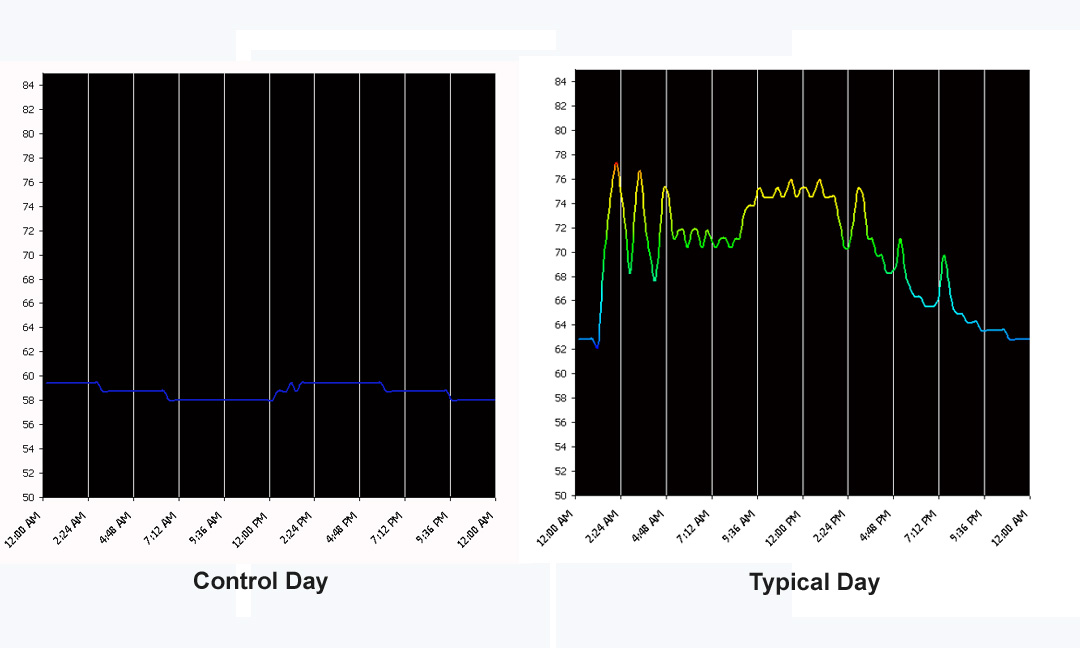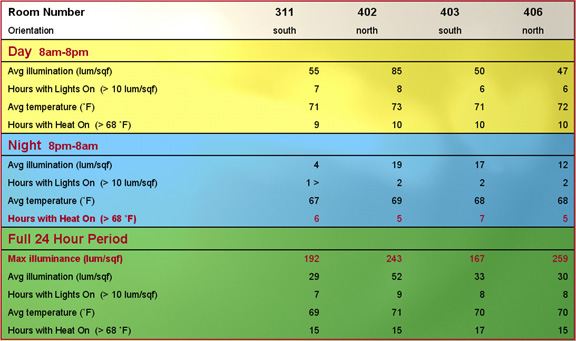
Analysis
Light Comparison
Control Day: Lights reach only 40 lumens on a Sunday when presumably the lights are never turned on. The light reading for this day is most likely a result of daylighting in the south-facing classroom.
Typical Day: On a typical school day the lights reach a peak of almost 200 lumens. With some exceptions the lights are typically brightest in the morning or late afternoon hours. This is consistent with design expectations, in anticipation of daylight harvesting during the mid day hours. Additionally, electric lights in north-facing classrooms appear to reach a higher peak illumination than do those in south-facing classrooms, reinforcing the notion that these south-facing rooms are taking advantage of daylighting opportunities.
In two of the classrooms (402 & 403) the data indicates that the light was on all night. 4 dataloggers (two in each classroom) recorded similar results during a 32-hour period from approximately 8:00am Wednesday morning until 10:30pm Thursday evening. One of the classrooms is south facing and one is north facing. Both classrooms are along the same corridor, but a third classroom (406) on the same corridor did not indicate any unusual light activity.
The temperature readings do not show the usual decrease in the afternoon/evening hours. However, the temperature values do peak as usual at about 2:00am, but were slightly higher than typical. Whether the rooms were actually occupied is uncertain. The increased temperature may have been due to occupancy or it may be a result of mechanical systems and/or the result of running the lights for such a long period of time.
The table indicates values for day, night, and 24 hour periods. A threshold was chosen for both lumens and ºF to indicate lights on and heat on conditions respectively. Light data appears to reflect expectations except for the one instance where lights were on for a 32-hour period. The temperature data bring up some questions as to the use of the heating system during hours when the building appears to be unoccupied.



